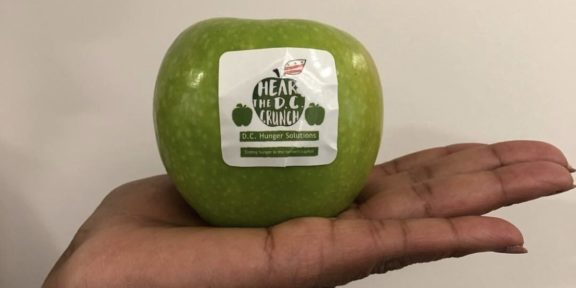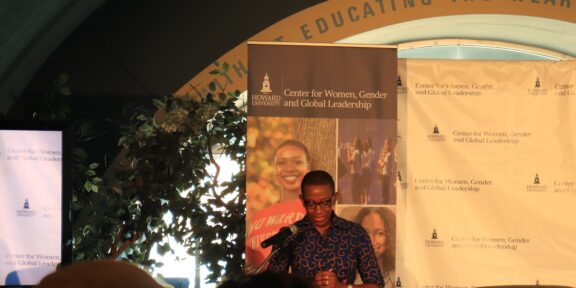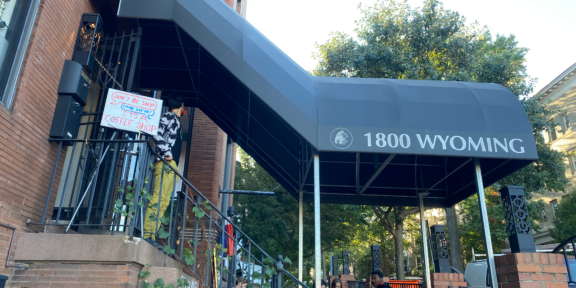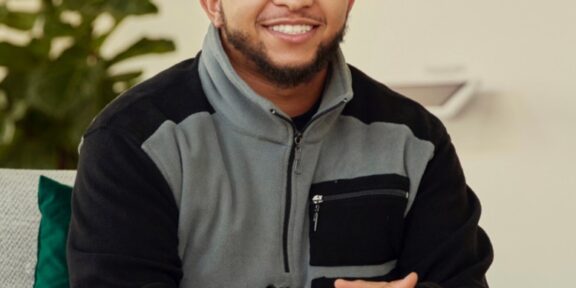
Courtesy: Wikimedia Commons
If you log on to the fast-fashion clothing retailer, H&M’s, website, you may find yourself lost in the digital sea of clothes. Photos of attractive and interesting looking people, adults and children clad in floral print blouses and technicolor trousers break up the blank space between overbearing “20% OFF $100 + FREE SHIPPING” banners.
After stumbling through sales pages of faux-gold jewelry and earth toned home décor, you might find yourself scrolling through thousands of women’s tops. Between the avant-garde-esque tops with tassels and sheer lace, you’ll come across a slew of graphic tees with varying designs about the same theme: feminism.
A heather grey crop top with “It’s Our World,” in orange bubble letters sits two rows up from another grey t-shirt featuring an all-black rose, detailed with white trim and “NOT YOUR PRINCESS” arched over the top in bright pink. “Cosmic Girl,” “Babes Only,” and “FEMME” scroll across the fronts and sleeves of other t-shirts, jerseys, and long sleeves as you scroll down the page.
The store, which was founded in 1947 in Sweden and exclusively sold women’s clothing at its inception, built a reputation of being socially conscious in recent years. In 2013 the company launched its Conscious collection – a line of everyday clothes and special occasion get ups, all spun from organic cotton and recycled polyester – to offer an eco-friendly option at H&M’s usual affordable prices.
As environmental consciousness and social consciousness often go hand in hand, it came as no surprise to some when H&M joined the world’s rise in feminism with its 2016 Autumn Collection commercial. The advertisement, set to Lion Babe’s rendition of “She’s A Lady,” opens with a plus-sized Latina women with long, black hair walking into her bathroom wearing only her berry-colored bra and panties. Images of women with shaven heads, clad in tuxedo-style buttoned shirt and suspenders, and natural afros flash across the screen. In the ad’s one-minute run time, the viewer sees a muscular, black female boxer admiring her frame in a mirror, a women with pink hair and visible underarm hair unzipping her skinny jeans and getting down to the business of eating a burger, a mature Asian woman entering and commanding attention at the head of a business meeting, and a well-known transgender model living her best life, strolling down a city street.
The advertisement came in addition to the retailer’s relatively inclusive plus-sized, maternity, long, and petite collections, and spoke to a class of consumers who were in the midst of the fourth wave of feminism. Worldwide, google searches for terms like “feminism” and “gender equality” have been on the rise since 2012, with a noticeable spike in searches from the summer of 2016 to March 2017.
It appeared as though H&M was doing right by women and had set itself apart from other clothing retailers in the same market, like Urban Outfitters and Forever 21, which had been plague with controversies regarding a lack of inclusivity and cultural insensitivity.
That was until the company came under fire earlier this year for an online advertisement from its British sector featuring a dark-skinned black child sporting an emerald green “Coolest Monkey In The Jungle” hoodie. While the company offered an apology for any offense and removed the item from circulation globally, it put the company under a microscope. Is it possible that the company that seemed to celebrate diversity and womanhood fails in both categories?
It just might. Although H&M offers plus-size options online, many stores either don’t stock those sizes. Some that did, like New York City’s 11 stores, ended up removing the section in the fall of 2016 (months after the retailer’s acclaimed commercial) to make room for expansions in the home décor, sportswear, and beauty departments. Of the garments that are kept in stock at most store, the largest is still too small for the average American woman who wears between a misses size 16 and 18 according to a 2010 study in The International Journal of Fashion Design, Technology, and Education.
“The overall goal that H&M wanted to achieve with women’s equality, somewhat falls flat in regards to their clothing. The limited selection of styles and an average range of sizes 0-12 in stores really make it difficult to believe that the store’s values are being utilized effectively,” Bria Good who’s a stylist at a small bridal company and has a bachelor’s or fine arts in fashion design.
On a more inhumane level, female employees further down H&M’s garment supply chain struggle to have basic human needs met. The company, like many others in the garment industry, employ laborers in underserved countries and areas to save money on wages paid to these workers. Cambodia is one of those countries. Women ages 18 to 35 make more than 90 percent of the country’s seven thousand garment workers.
A report by Asia Floor Wage Alliance detailed some of the conditions these women work in through interviews with 201 employees in 12 different Cambodian factories. Workers from 11 factories reported witnessing or experiencing women being dismissed from their jobs during pregnancies, without regard to maternity leave guidelines outlined by the International Labour Organization.
Women that were able to return to their positions after giving birth were often encouraged to work into and through their lunch and breastfeeding breaks, with some women reported working as much as two overtime hours per day. Even with the extra hours worked, the average take home pay was $187.97 per month, when employees estimated that they needed to make at least $230 monthly to “live with dignity.”
“Fast fashion retailers that print ‘I’m a feminist on a t-shirt are the ultimate oxymoron, especially when the women, and children, making those shirts are paid pennies a day,” Autumn Dalton, a former H&M and fast-fashion shopper said. “They know their workers aren’t being treated fairly.”
The goal of a business is to earn as much capital for its product as possible, but it’s the company’s choice to decide how best to do that. At H&M’s core, the retailer is not one built upon the ideal of equality and inclusiveness of all women, but is it their job to uphold any of the ideal they market to consumers?
“I want to care,” Tierra Brown, a college-aged H&M shopper, said. “It’s easier to just buy the products than it is to do the background research, because then, who would we support?”
As the world sits precariously in the midst of its fourth wave of feminism, H&M’s woman empowerment shirts could be the company capitalizing on a trend – no differently than it takes advantage of the fashion industry’s latest color and pattern trends.
If all we ask of clothing companies to supply consumers with garments to express themselves the way each individual sees fit, is it enough for the H&M’s of the world to produce clothing that allows for the expression of ideas like feminism, even if they don’t practice them?






